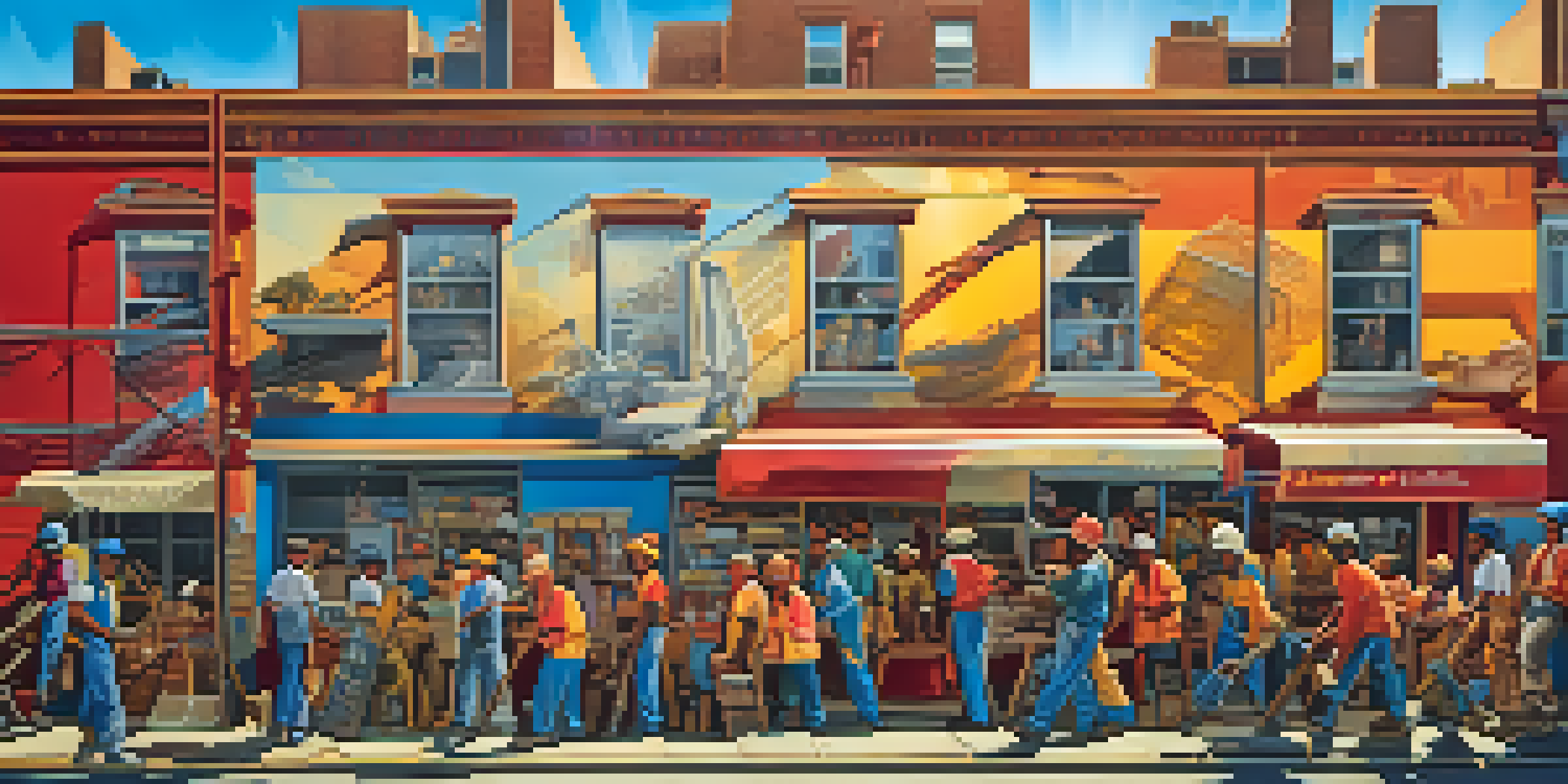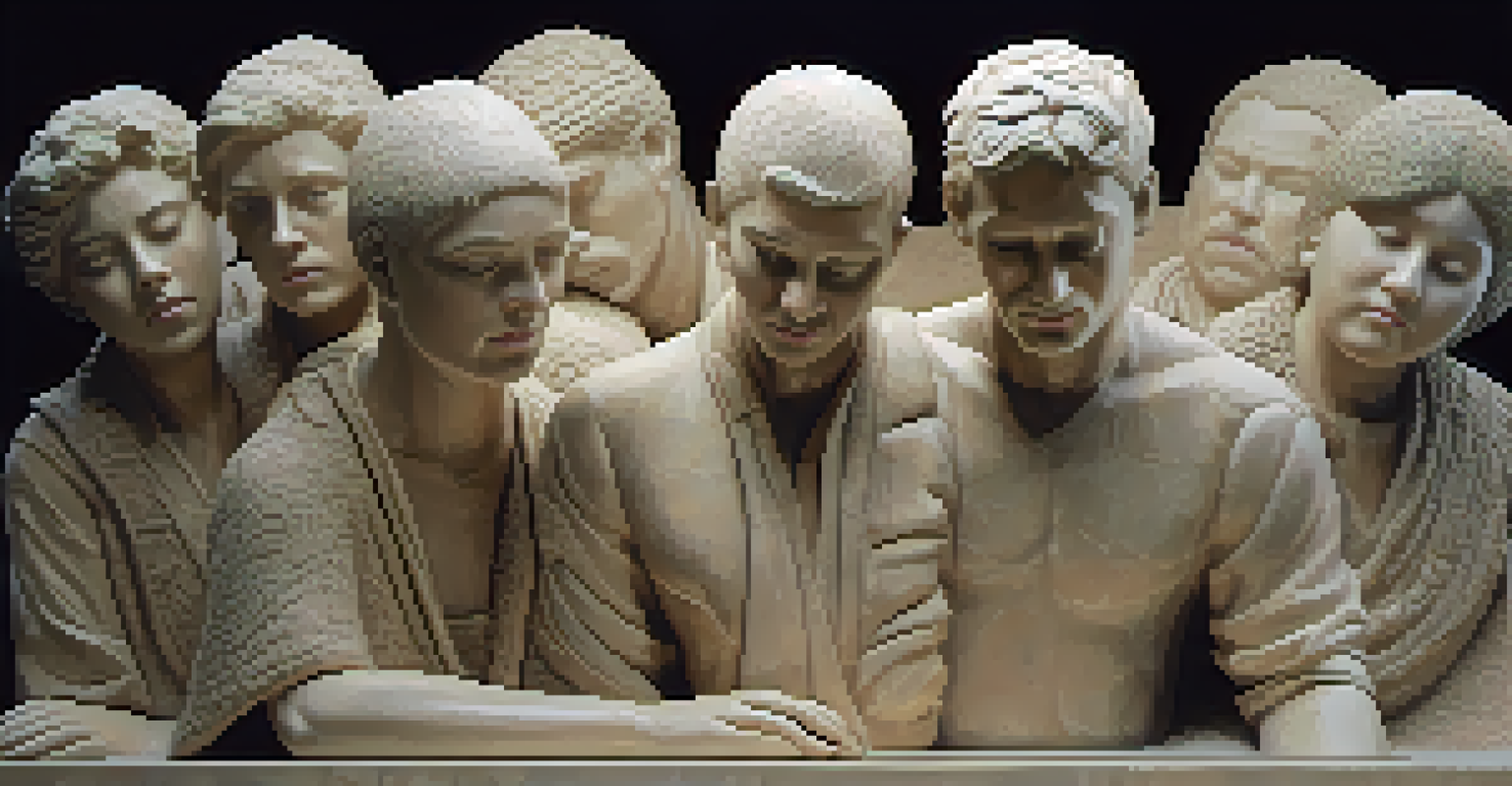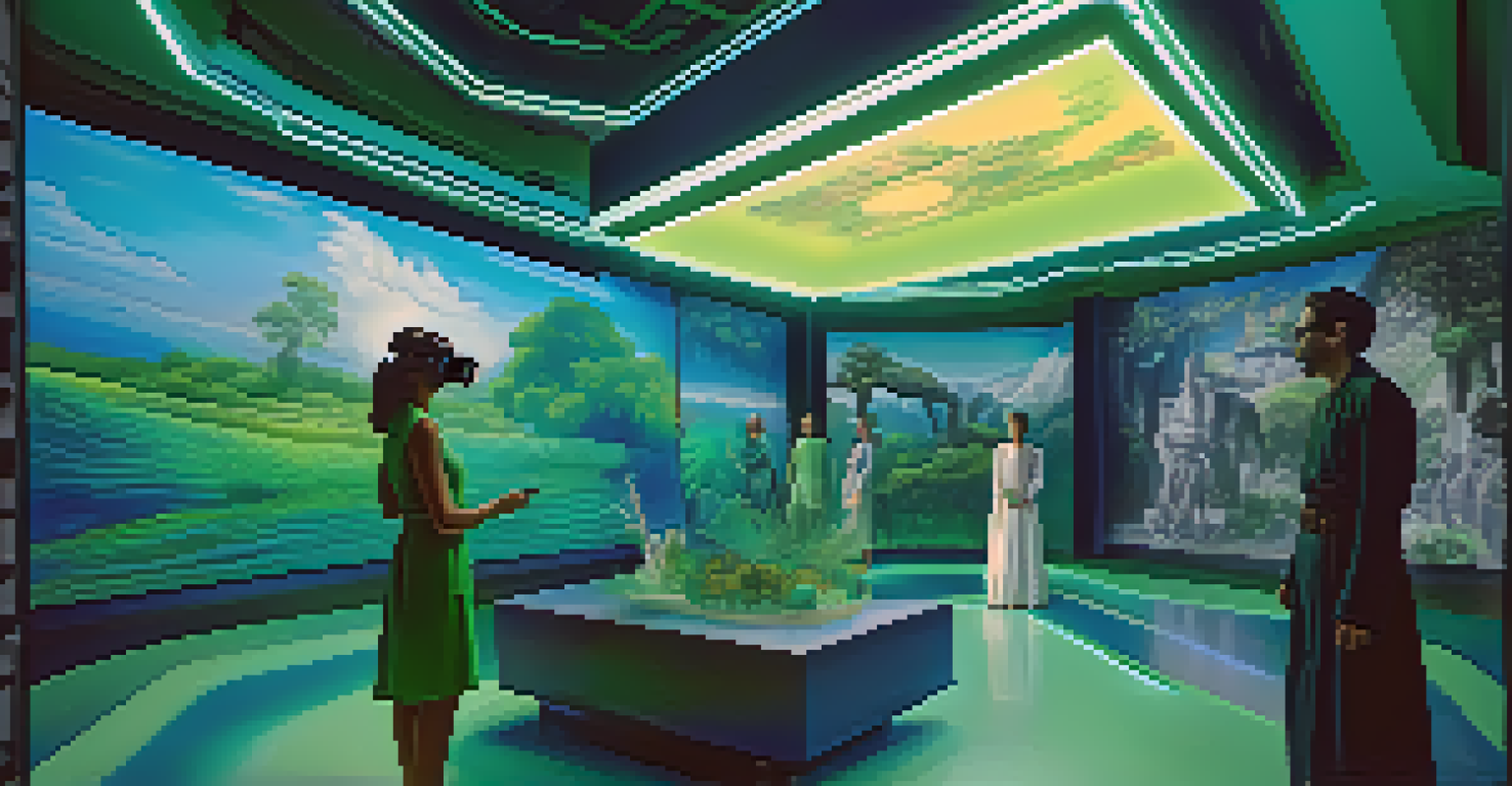The Role of Art in Documenting Historical Human Experiences

Art as a Reflection of Cultural Moments
Art has always been a mirror reflecting the cultural zeitgeist of its time. From the cave paintings of our ancestors to contemporary street art, these creations capture the essence of human experience. For instance, the murals of Diego Rivera not only beautified public spaces but also documented the struggles and triumphs of the working class in Mexico.
Art is the most beautiful of all lies.
By visualizing societal issues, art provides a unique perspective that written history often overlooks. It serves as a dialogue between the artist and the viewer, inviting us to contemplate the emotions and narratives behind each piece. This connection often brings to light the complexities of historical events, making them more relatable and human.
Moreover, art transcends language barriers, communicating universal themes that resonate across cultures and time periods. When we view a powerful painting or sculpture, we engage with the emotions and stories of those who lived through those historical moments, fostering a deeper understanding of our shared human experience.
Art as Documentation of Social Change
Throughout history, art has played a pivotal role in documenting social change and movements. For example, the works of artists like Käthe Kollwitz highlighted the plight of the poor and the impacts of war, urging society to reflect on these harsh realities. Such pieces not only serve as historical records but also as calls to action.

In the 1960s, artists like Andy Warhol used pop art to comment on consumer culture and the political climate of the time. Through their work, they challenged societal norms and encouraged conversations about equality, justice, and identity. These artistic expressions become a visual archive of the socio-political landscape, preserving voices that might otherwise be forgotten.
Art Reflects Cultural Moments
Art serves as a mirror to society, capturing the essence of human experiences and emotions throughout history.
Art can also empower marginalized communities by bringing their stories to the forefront. Through various mediums, artists can challenge perceptions and advocate for change, demonstrating that art is not just about aesthetics but also about voice and visibility.
The Role of Art in Preserving Memory
Art serves as a powerful tool for preserving collective memory, ensuring that significant events are not lost to time. Memorials and monuments, such as the Vietnam Veterans Memorial, act as poignant reminders of the sacrifices made during conflicts. They invite reflection and honor the experiences of those affected.
The painter tries to master the art of seeing, and to convey what he sees in a way that the viewer can understand.
Additionally, artworks created in response to tragic events, like the September 11 attacks, play a crucial role in processing grief and trauma. These pieces offer solace and spark conversations about loss, resilience, and recovery. They become part of our historical narrative, encapsulating emotions that resonate with generations.
By encapsulating memories in tangible forms, art allows future generations to engage with the past. This connection fosters empathy and understanding, making history feel less distant and more relevant to our lives today.
Art as a Catalyst for Conversation
One of the remarkable aspects of art is its ability to spark dialogue around complex topics. Whether through visual art, literature, or performance, artists often challenge viewers to confront uncomfortable truths. For instance, the work of artists like Ai Weiwei addresses censorship and human rights issues, prompting global conversations.
Exhibitions and installations often serve as platforms for discussing historical events, societal issues, and cultural narratives. These spaces encourage audiences to engage, question, and share their perspectives, fostering a communal exploration of history. Art becomes a catalyst for discourse, bridging gaps between different viewpoints.
Art Documents Social Change
Throughout history, art has played a crucial role in highlighting social issues and advocating for change, empowering marginalized voices.
This dialogue not only enhances our understanding of history but also encourages inclusivity. By allowing diverse voices to be heard through artistic expression, we can create a richer, more nuanced understanding of the human experience.
The Emotional Impact of Historical Art
Art has a unique ability to evoke deep emotions and connect us with historical experiences. A poignant painting or a haunting piece of music can transport us back to a specific moment in time, allowing us to feel the weight of those experiences. Consider Picasso's 'Guernica,' which powerfully conveys the horrors of war and suffering.
These emotional connections make history more accessible and relatable. When we experience art that depicts historical events, we often find ourselves empathizing with those who lived through those times. This emotional engagement encourages us to reflect on the implications of history in our present lives.
Furthermore, art can help us process collective trauma, providing an outlet for healing and understanding. By confronting these emotions through art, we can learn from the past and foster a sense of solidarity in addressing contemporary issues.
Art as an Educational Tool
Art plays a crucial role in education, serving as an engaging way to teach history. Educators often use artworks to bring historical events to life, providing students with a visual context that enhances their understanding. This method not only makes learning more enjoyable but also encourages critical thinking.
For instance, studying the works of artists from specific historical periods can illuminate the cultural and social dynamics of those times. Students can analyze how art reflects societal values, conflicts, and changes, gaining insights that textbooks alone may not offer. This approach fosters a more comprehensive understanding of history.
Art Enhances Historical Understanding
By evoking emotions and creating connections, art makes history more accessible and relatable, fostering empathy and personal reflection.
Moreover, art encourages creativity and personal expression, allowing students to connect with history on a personal level. By creating their own artworks in response to historical themes, learners can explore their interpretations and feelings, making history a living, breathing subject.
The Future of Art in Documenting History
As we move further into the digital age, the role of art in documenting history is evolving. New technologies, such as virtual reality and digital media, offer innovative ways to engage with historical narratives. Artists are now able to create immersive experiences that allow viewers to step into the past and experience history firsthand.
Social media platforms also provide a space for artists to share their work and connect with a global audience. This democratization of art enables diverse voices to contribute to the historical narrative, highlighting stories that may have been overlooked in traditional historical accounts.

Looking ahead, the integration of technology in art will continue to shape how we document and understand human experiences. As artists explore new mediums and platforms, they will undoubtedly find creative ways to capture the complexities of history, ensuring that the stories of the past remain relevant and accessible to future generations.